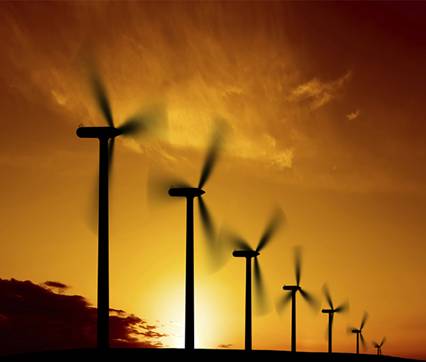
Key measures would also include tightening control on means of transport, designing and constructing new urban areas with integrated green space and energy-efficient buildings, and issuing policies with orientation for greenhouse gas reduction in the energy sector, said Deputy Director General of the ministry's Institute of Strategy and Policy on Natural Resources and Environment Nguyen The Chinh, at a participatory dialogue session yesterday.
"Encouraging the use of renewable energy and energy saving, gradually omitting outdated, energy-inefficient technologies in industry, saving energy and increasing energy efficiency in enterprises, buildings and transportation are all part of the measures," he said.
Viet Nam has a total potential wind power of one million MW and it is expected to develop 12,000MW of wind power by 2020, equivalent to 3 per cent of the country's total output, according to Country Manager of GE Energy Viet Nam Nguyen Xuan Thang.
The total potential biomass power was 16,000MW with diversified sources of rice husk, sugarcane, cassava, wood, animal waste and other agricultural waste, he said, adding that the country planned to develop 8,000MW by 2020, accounting for two per cent of the country's total output.
A number of projects have already started to promote the use of renewable power such as a wind farm in southern Ninh Thuan Province, a rice husk power plant in the Mekong Delta province of Tien Giang, a biogas plant in northern Ninh Binh Province and a biomass plant in the Mekong Delta province of Soc Trang, which are expected to be put into operation by 2012, 2013, 2014 and 2015, respectively.
Nguyen Trung Thang from the Ministry's Institute of Strategy and Policy on Natural Resources and Environment said the application of green growth was important towards a low carbon economy.
He stressed key strategies in the application of green growth, including economic growth which focuses on environmentally-friendly production, consumption behaviour adjustment and trade activities, environmental degradation reduction with policies and strategies to prevent pollution as well as strategies to mitigate and adapt to the impacts of climate change.
Viet Nam has applied green growth by promoting environmentally-friendly technologies, attracting investment on low carbon technologies, issuing supporting policies and mechanisms and raising public awareness.
"The country's policy on payment for forestry environmental services, for example, has been welcomed by many countries as an effective initiative in encouraging local people to plant and protect forests," he said.
Director of Holcim Viet Nam, a subsidiary of Holcim - one of the world's leading suppliers of cement and aggregates, Paul Hayes, said cement production was thought to account for six per cent of the total CO2 emissions from stationary sources worldwide.
He said clinker production was the most energy intensive stage of the cement production process and produced the most CO2. He suggested the use of mineral components to make blended cements to reduce the quantity of clinker in each tonne of cement used and thereby reducing the amount of CO2.
"It is also essential to use waste heat recovery systems to capture the waste heat from cement kilns to generate electricity and phase out outdated cement kilns in operation to limit environmental pollution," he added. — VNS
Source: Vietnamnews